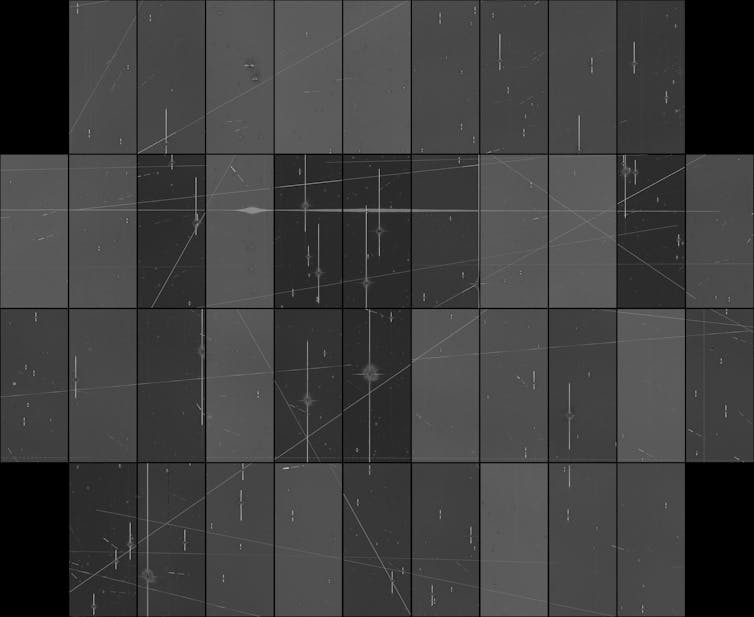
I used to love rocket launches when I was younger. During every launch, I imagined what it would feel like to be an astronaut sitting in the spacecraft, listening to that final countdown and then feeling multiple gees push me up through the atmosphere and away from our blue marble.
But as I learned more about the severe limitations of human spaceflight, I turned my attention to the oldest and most accessible form of space exploration: the science of astronomy.
Since 2019, I’ve watched my unencumbered enthusiasm for rocket launches soften to tepid interest, and finally sour to outright dread. The corporate space race, led by SpaceX, is entirely responsible for this transformation in my mindset.
I am worried by the complete shift to the move-fast-and-break-things attitude that comes from the tech sector instead of government scientific agencies. I am put off by the colonialist language and billionaire-worship of private corporations. I am increasingly furious at the nonexistent public education and lack of transparency offered by these companies.
The final nail in the coffin for my love of rocket launches came with SpaceX’s Starlink satellite megaconstellations.
Crowded orbits
The corporate space race is well underway, with private companies flooding Low Earth Orbit with thousands of mass-produced satellites. In previous decades, the prohibitively high cost of launch kept the rate of increase and total number of satellites from growing too rapidly. But launches have been getting steadily cheaper for years.
Al Jazeera reports on the impacts of Starlink satellites.
SpaceX has launched thousands of their own Starlink communication satellites, as well as hundreds of satellites for their direct competitors. Half of all launches worldwide in 2023 were SpaceX rockets.
As an astronomer, I’m painfully aware of what these thousands of new satellites have done to the night sky worldwide. They reflect sunlight long after the sky has grown dark, looking like moving stars.
Starlink satellites are the most numerous and occupy some of the lowest orbits, so they make up the majority of the satellites seen in the sky.
Last year, SpaceX launched one of the brightest objects in the sky on behalf of another company: BlueWalker 3, a satellite with the same sky-footprint as a small house. They plan to operate a fleet of dozens, each as bright as the brightest stars in the sky.
Lost information and knowledge
These satellites are now increasingly obstructing telescopic space exploration, both on the ground and in space. Astronomers are the canaries in the coal mine for this rapidly expanding experiment in orbit: we see these satellites increasingly affecting our research every day.
I have watched over the past five years as satellite streaks in my own research images from the Canada-France-Hawaii Telescope have changed from an unusual occurrence to lost data in nearly every image.

A composite of 29 individual exposures from the Canada-France-Hawaii Telescope on Maunakea, taken in August 2022. The horizontal and diagonal white lines are bright satellites that unexpectedly flew through the field of view during observations, covering any objects behind them. (P. Cowan/W. Fraser/S. Lawler/CLASSY Survey Team/CFHT)
Astronomy is the only way to learn about the universe, the overwhelming majority of which can never be explored by humans. The farthest human-made object from Earth is the Voyager 1 probe, now eight times farther from the sun than Neptune after 46 years continuously travelling significantly faster than a speeding bullet.
But even if Voyager 1 was pointed directly toward our nearest neighbouring star, Proxima Centauri (it’s not), it would take over 100,000 years to get there. We are light-years away from having technology that can robotically explore even our neighbouring solar systems on a human timescale, let alone bring humans out to the stars.
The vast majority of astronomy research is carried out by telescopes on Earth: large optical telescopes on remote mountaintops, large radio telescopes in radio-quiet zones that are meticulously maintained, as well as smaller telescopes scattered around the world.
There are a handful of telescopes in Low Earth Orbit that also have to contend with light pollution from Starlink and other megaconstellations. There are also a handful of telescopes outside Earth orbit which can only operate for a few years, unlike ground-based facilities that can be maintained and enhanced with new technologies for decades.
Government regulation needed
Space exploration using Earth-based telescopes is growing increasingly less effective as more bright and radio-loud satellites are placed between Earth and the stars. But there are much worse problems ahead if corporations continue launching satellites: atmospheric pollution on launch and reentry, ground casualty risks from reentries, and the very real possibility of a runaway collisional cascade in orbit, referred to as the Kessler Syndrome.
Satellites are an incredibly useful part of our lives, but there are limits to how many can safely orbit Earth. Current regulations on launches and orbital operations by governments are very weak, and are not set up for the current regime of thousands of new satellites per year.
Regulation on the number of satellites in orbit would force corporations toward technology improvements and service models that use fewer satellites, keeping orbit usable for future generations.
Ask your government representatives to support satellite regulation, and expansion of rural broadband. Get out and enjoy your dark skies, before they change.
With proper regulation, our oldest form of space exploration can continue. I desperately hope we never reach a point where the natural patterns in the sky are drowned out by anthropogenic ones, but without regulation, corporations will get us there soon.
Samantha Lawler, Associate professor, Astronomy, University of Regina
This article is republished from The Conversation under a Creative Commons license. Read the original article.






